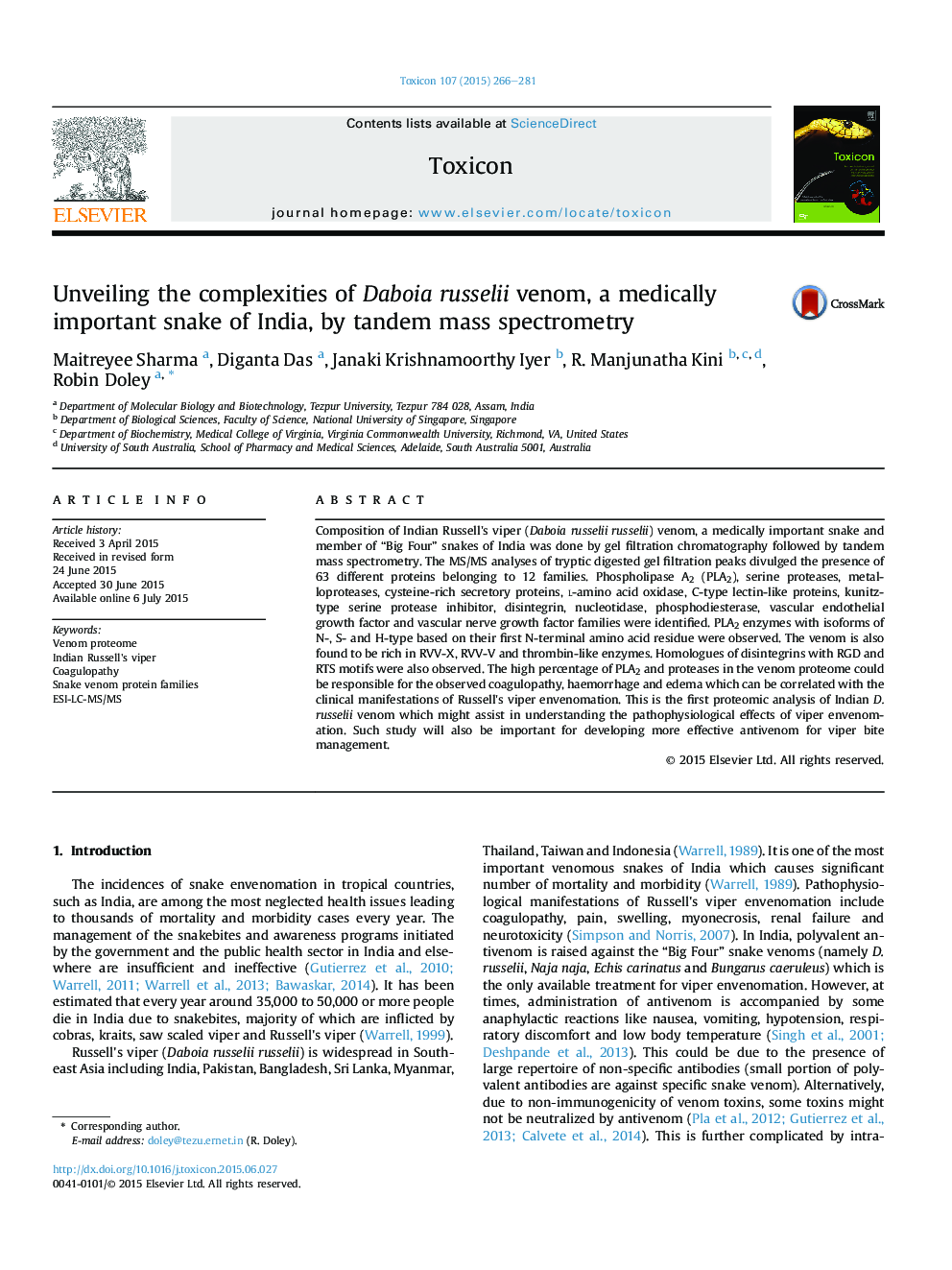| Article ID | Journal | Published Year | Pages | File Type |
|---|---|---|---|---|
| 2064290 | Toxicon | 2015 | 16 Pages |
•First report of Indian Russell's viper venom composition by proteomic approach.•Proteome contains 63 different proteins belonging to 12 snake venom protein families.•Proteomic data correlates with the clinical manifestations of Russell's viper envenomation.•Demonstrate the variation in venom composition with Myanmar Russell's viper.
Composition of Indian Russell's viper (Daboia russelii russelii) venom, a medically important snake and member of “Big Four” snakes of India was done by gel filtration chromatography followed by tandem mass spectrometry. The MS/MS analyses of tryptic digested gel filtration peaks divulged the presence of 63 different proteins belonging to 12 families. Phospholipase A2 (PLA2), serine proteases, metalloproteases, cysteine-rich secretory proteins, l-amino acid oxidase, C-type lectin-like proteins, kunitz-type serine protease inhibitor, disintegrin, nucleotidase, phosphodiesterase, vascular endothelial growth factor and vascular nerve growth factor families were identified. PLA2 enzymes with isoforms of N-, S- and H-type based on their first N-terminal amino acid residue were observed. The venom is also found to be rich in RVV-X, RVV-V and thrombin-like enzymes. Homologues of disintegrins with RGD and RTS motifs were also observed. The high percentage of PLA2 and proteases in the venom proteome could be responsible for the observed coagulopathy, haemorrhage and edema which can be correlated with the clinical manifestations of Russell's viper envenomation. This is the first proteomic analysis of Indian D. russelii venom which might assist in understanding the pathophysiological effects of viper envenomation. Such study will also be important for developing more effective antivenom for viper bite management.
Graphical abstractFigure optionsDownload full-size imageDownload as PowerPoint slide
